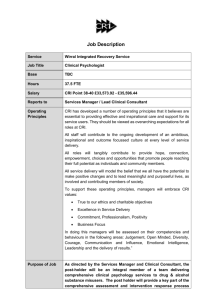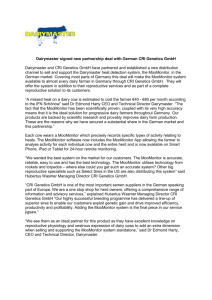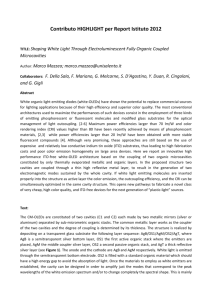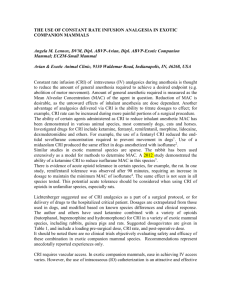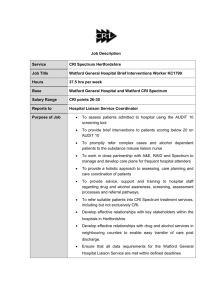PG25_18_21
advertisement
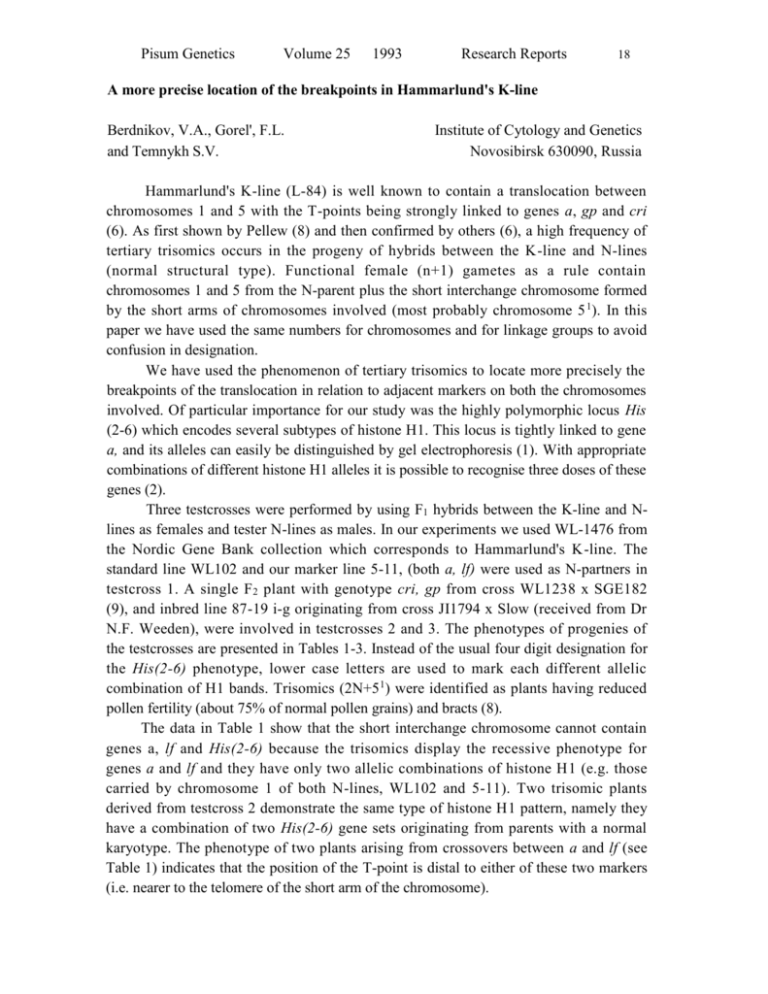
Pisum Genetics
Volume 25
1993
Research Reports
18
A more precise location of the breakpoints in Hammarlund's K-line
Berdnikov, V.A., Gorel', F.L.
and Temnykh S.V.
Institute of Cytology and Genetics
Novosibirsk 630090, Russia
Hammarlund's K-line (L-84) is well known to contain a translocation between
chromosomes 1 and 5 with the T-points being strongly linked to genes a, gp and cri
(6). As first shown by Pellew (8) and then confirmed by others (6), a high frequency of
tertiary trisomics occurs in the progeny of hybrids between the K-line and N-lines
(normal structural type). Functional female (n+1) gametes as a rule contain
chromosomes 1 and 5 from the N-parent plus the short interchange chromosome formed
by the short arms of chromosomes involved (most probably chromosome 5 1). In this
paper we have used the same numbers for chromosomes and for linkage groups to avoid
confusion in designation.
We have used the phenomenon of tertiary trisomics to locate more precisely the
breakpoints of the translocation in relation to adjacent markers on both the chromosomes
involved. Of particular importance for our study was the highly polymorphic locus His
(2-6) which encodes several subtypes of histone H1. This locus is tightly linked to gene
a, and its alleles can easily be distinguished by gel electrophoresis (1). With appropriate
combinations of different histone H1 alleles it is possible to recognise three doses of these
genes (2).
Three testcrosses were performed by using F1 hybrids between the K-line and Nlines as females and tester N-lines as males. In our experiments we used WL-1476 from
the Nordic Gene Bank collection which corresponds to Hammarlund's K-line. The
standard line WL102 and our marker line 5-11, (both a, lf) were used as N-partners in
testcross 1. A single F 2 plant with genotype cri, gp from cross WL1238 x SGE182
(9), and inbred line 87-19 i-g originating from cross JI1794 x Slow (received from Dr
N.F. Weeden), were involved in testcrosses 2 and 3. The phenotypes of progenies of
the testcrosses are presented in Tables 1-3. Instead of the usual four digit designation for
the His(2-6) phenotype, lower case letters are used to mark each different allelic
combination of H1 bands. Trisomics (2N+5 1) were identified as plants having reduced
pollen fertility (about 75% of normal pollen grains) and bracts (8).
The data in Table 1 show that the short interchange chromosome cannot contain
genes a, lf and His(2-6) because the trisomics display the recessive phenotype for
genes a and lf and they have only two allelic combinations of histone H1 (e.g. those
carried by chromosome 1 of both N-lines, WL102 and 5-11). Two trisomic plants
derived from testcross 2 demonstrate the same type of histone H1 pattern, namely they
have a combination of two His(2-6) gene sets originating from parents with a normal
karyotype. The phenotype of two plants arising from crossovers between a and lf (see
Table 1) indicates that the position of the T-point is distal to either of these two markers
(i.e. nearer to the telomere of the short arm of the chromosome).
Pisum Genetics
Volume 25
1993
Research Reports
19
Table 1. Phenotypes of progeny from testcross 1.
(WL1476 x WL102) x 5-11: His(2-6)a A Lf / His(2-6)b a lf a x His(2-6)c a lf a
Phenotype
Pollen
fertility
Karyotype
Number
His(2-6)
A
Lf
2N
His(2-6)b/His(2-6)c
a
lf a
~100%
18
2N
His(2-6)b/His(2-6)c
a
Lf
~100%
2
N+K
His(2-6)a/His(2-6)c
A
Lf
~50%
13
2N+51
His(2-6)b/His(2-6)c
a
lf a
70-80%
3
Table 2. Phenotypes of progeny from testcross 2.
(WL1476 x cri gp) x 87-19 i-g: His(2-6)a/His(2-6)d , Cri Gp/cri gp x His(2-6)e, Cri gp
Phenotype
Karyotype
Pollen
fertility
Number
His(2-6)
Cri
Gp
2N
His(2-6)d/His(2-6)e
Cri
gp
~100%
18
N+K
His(2-6)a/His(2-6)e
Cri
Gp
~50%
14
2N+51
His(2-6)d/His(2-6)e
Cri
gp
70-80%
2
Table 3. Phenotypes of progeny from testcross 3.
(WL1476 x cri gp) x cri gp: His(2-6)a/His(2-6)d , Cri Gp/cri gp x His(2-6)d, cri gp
Phenotype
Karyotype
Pollen
fertility
Number
His(2-6)
Cri
Gp
His(2-6)d
cri
gp
~100%
7
N+K
His(2-6)a/His(2-6)d
Cri
Gp
~50%
9
2N+51
His(2-6)d
Cri
gp
70-80%
2
2N
Pisum Genetics
Volume 25
1993
Research Reports
20
As for the location of the breakpoint in relation to markers on chromosome 5, the
data of the testcross 3 (Table 3) clearly indicate that the T-point lies between genes cri
and gp, and that chromosome 5 1 contains gene Cri but does not carry Gp. Two
trisomic plants derived from testcross 2 also have the recessive phenotype for gene gp.
Progeny analysis of one trisomic plant originating from testcross 3 confirmed this result.
Although the trisomics (2N+5 1), as a rule, are highly female sterile (8), one of our
trisomic plants (No. 54) had a nearly normal level of fertility. We have harveste d 41
seeds from that plant which gave rise to 31 cri and 10 Cri plants. Each Cri plant had
bracts and reduced pollen fertility, and the additional chromosome registered as a
univalent at metaphase 1 of the pollen mother cells (Fig. 1).
These data permit us to put the T-points (indicated by arrows) on the chromosome
map as follows:
Here t stands for the telomeres of the short arms.
Fig. 1. Metaphase 1 in pollen mother cells of a tertiary trisomic 2N+5 1. Arrow shows
the univalent 51.
Pisum Genetics
Volume 25
1993
Research Reports
21
Table 4. Percentage of crossingover between the T-points of Hammarlund's K-line and
adjacent marker genes.
Cross
Pair of factors
1+2
2
T - A
T - A
His(2-6) – A
His(2-6) – A
His(2-6) – A
His(2-6) – A
T - Gp
A
B
XS 38
XS 39
T - Cri
T - Gp
Recomb. fract. ±
SE
4.2 ± 2.27
7.7 ± 2.27
4.1 ± 1.5
6.5 ± 1.1
7.0 ± 2.2
5.3 ± 0.9
5.0 ± 3.29
1.0 ±0.82
1.7 ± 0.29
Reference
7
7
1
3
3
2
10
10
4
We did not estimate the recombination frequency between the T-point and locus
His{2-6) in our experiments directly but comparison of known data (Table 4) indicates
that the distances of T to A and His(2-6) to A are approximately the same, and that the
percentage of crossing-over varies in different crosses in the same range. The His(2-6)
locus would be the nearest marker for the T-point of Hammarlund's K-line. The results
of cytological studies of the K-line (6) suggest that the breakpoints are located close to
centromeres, so this cluster of histone HI genes occupies the precentromeric region of
chromosome 1.
Acknowledgements We thank Dr N.F. Weeden for providing seeds of the inbred line
87-19 i-j and useful discussion of our results.
1.
2.
3.
4.
5.
6.
7.
8.
9.
10.
Belyaev, A.I. and Berdnikov, V.A. 1981. Genetica (USSR) 17:498-504.
Gorel', F.L., Temnykh, S.V., Lebedeva, I.P. and Berdnikov, V.A. 1992.
Pisum Genet. 24:48-51.
Kosterin, O.E. 1992. Pisum Genet. 24:56-59.
Lamm, R.L. 1974. PNL 6:29.
Lamm, R.L. 1976. PNL 8:36-37.
Lamm, R.L. 1986. PNL 18:34-37.
Lamm, R.L. and Miravalle, R.J. 1959. Hereditas 45:417-440.
Pellew, C. 1940. J. Genet. 39:363-390.
Rozov, S.M., Temnykh, S.V., Gorel', F.L. and Berdnikov, V.A. 1993. Pisum
Genet. 25:46-51.
Snoad, B. 1966. Genetica Pol. 37:247-254.


